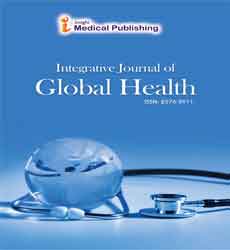ISSN : 2576-3911
Integrative Journal of Global Health
Epidemiology a Methodology to Save Human Life
Mohamed H. Al Thani*
Department of Pathology, Sidra Medicine, Qatar
- *Corresponding Author:
- Mohamed H. Al Thani,
Department of Pathology, Sidra Medicine, Qatar, Email: mdhalthani_786@gmail.com
Received Date: November 06, 2021; Accepted Date: November 20, 2021; Published Date: November
27, 2021
Citation: Thani M H A (2021) Epidemiology a Methodology to Save Human Life. Integr J Glob Health Vol.5 No.4. e002.
Editorial
The review and investigation of the appropriation, examples, and determinants of wellness and infection situations in described populations is the study of disease transmission. It serves as a basis for overall well-being, guiding strategy decisions and evidence-based treatment by identifying risk factors for illness and areas for preventative medical care. The study of disease transmission has resulted in procedures that are now used in clinical examinations, general health investigations, and, less importantly, fundamental organic science research.
Sickness causation, transmission, episode examination, illness
reconnaissance, ecological the study of disease transmission, criminological the study of disease transmission, word related the study of disease transmission, screening, bio monitoring and therapy impact correlations, for example, are all important aspects of epidemiological review. Other logical disciplines, such as science, are used by disease transmission experts to better understand infection processes, insights to use the information and create accurate conclusions, sociologies to better understand general and distal causes, and design for openness evaluation.
The study of disease transmission, which literally means "the inquiry of what is upon persons," is derived from the Greek epi 'upon, among,' demos 'individuals, region,' and logos ‘study, word, talk,' suggesting that it only relates to human populations. Nonetheless, despite the availability of the term "epizoology," it is most commonly used in zoological population studies (veterinary disease transmission studies), and it has also been applied to plant population studies (herbal or plant sickness the study of disease transmission).
Hippocrates was the first to distinguish between diseases that "visit" or "dwell inside" a population (plague) and those that "visit" or "live inside" a population (endemic) (endemic). The term "the study of disease transmission" appears to have been coined in 1802 by the Spanish doctor Villalba in his book Epidemiologa Espaola to describe the analysis of scourges. Disease transmission experts also look at the link between illnesses in a population, which is known as a syndemic.
The word "disease transmission research" is now widely used to refer to the portrayal and cause of plague, irresistible infection, and, more broadly, sickness, including related disorders. Hypertension, psychological illness, and corpulence are a few examples of subjects studied through disease transmission
research. As a result, the study of disease transmission is dependent on how the example of illness produces a change in people's capacity.
Epidemiological practice and the outcomes of epidemiological study play a crucial role in the development of population-based wellbeing management systems. The board of population-based health includes the ability to
• Evaluate the well-being states and needs of a target population
• Execute and evaluate mediations aimed at improving that population's well-being.
• Effectively and efficiently provide care to members of that population in a way consistent with the social, approach, and well-being asset values of the community
Current population-based health-care administrations are mind- boggling, necessitating a diverse set of abilities (clinical, political, mechanical, numerical, and so on), of which epidemiological practice and examination is a critical component that is bound together with board science to provide effective and compelling medical services and wellbeing administrations to a populace. This project necessitates the forward-thinking ability of today's risk executives to change health risk factors, frequency, commonness, and mortality measurements (derived from epidemiological examination) into board measurements that not only help how a health framework reacts to current populace medical problems, but also how a health framework can be figured out how to more readily react to future potential populace medical problems.
Open Access Journals
- Aquaculture & Veterinary Science
- Chemistry & Chemical Sciences
- Clinical Sciences
- Engineering
- General Science
- Genetics & Molecular Biology
- Health Care & Nursing
- Immunology & Microbiology
- Materials Science
- Mathematics & Physics
- Medical Sciences
- Neurology & Psychiatry
- Oncology & Cancer Science
- Pharmaceutical Sciences
